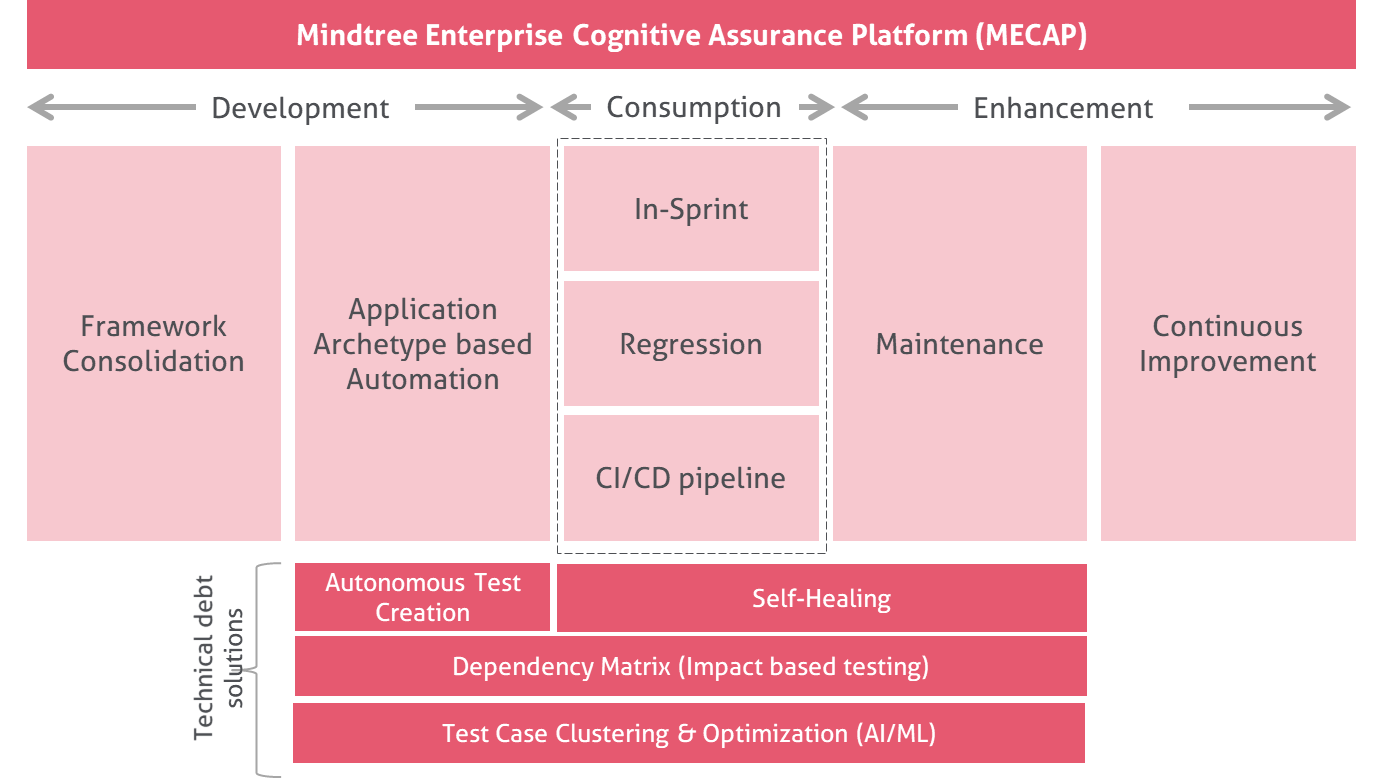How An AI-Based Testing Approach Reduces Technical Debt
Technical debt is a natural consequence of modernization when old and new systems co-exist to deliver business value to the end customer. It also gets accumulated when proper coding and testing guidelines are not followed. Therefore, it needs proper planning from the business and development teams to ensure technical debt remains under control. However, what is the issue if technical debt is not optimized?
According to a report published by McKinsey, today, across organizations that we work with, more than 40% of the IT budget is spent on managing complexities arising due to technical debt, whether it is for maintenance of legacy systems, modification of data structures or development of APIs for integrating legacy core and modern digital systems.
As the technology landscape becomes complex with modernization, the budget for removing the technical debt increases, leaving very less budget for innovation. A collective effort from development teams, product, and business owners as well as test engineering teams are required to keep the technical debt to a minimum. All the teams need to align to the overall business goal and apply software design and testing principles.
We have seen testing challenges that our customers face due to increasing technical debt. Some of them are –
- As modern applications are built and integrated with legacy systems, a large repository of test suites is built over a period, having limited coverage of end-to-end business flow and impact. Test teams often find it challenging to figure out the relevance of these test cases.
- Companies that acquire other products and integrate third-party systems with their core systems find it difficult to create a holistic testing strategy. They spend extra effort and money to rewrite their test suites.
- Automation doesn’t work with new interfaces and products. With the change in the interfaces and data flow, the existing automation becomes ineffective and does not deliver the expected ROI.
From a testing perspective, we have designed solutions to tackle the issue of technical debt. These solutions are –
- Applying AI-based clustering methods to glean through the heterogeneous sources of data such as test case repositories, defect logs, and production incidents to optimize test suites. The solution enables AIOps.
- Creating a Dependency Structural Matrix to provide insights into the layers of software architecture and identifying relationships that exist between functionalities.
- Autonomous creation of test cases, scripts, and test data, based on Natural Language Understanding algorithms. Test execution is done through BOTs.
- Self-healing of test scripts to reduce maintenance efforts and advanced diagnostics to predict failures.
These solutions are the integral components of our cognitive assurance platform called MECAP.

We have successfully deployed these solutions in many of our key testing engagements. Some of them are
- Deployed a self-healing solution for a large US-based insurance organization. The challenge was to resolve the failure of regression scripts due to UI redesign and frequent changes of application locators, which led to high maintenance effort and impact on execution schedule of all the scrum teams. It put a lot of pressure on the deadline and teams started to look for quick fixes and workarounds which were not scalable. Our solution provided runtime self-healing of test scripts in the pipeline, reducing the automation maintenance effort by 30%.
- Created a Dependency Matrix for the world’s largest broadcasting organization. Due to a complex technical landscape with multiple applications and devices, it was very challenging to understand the relevant test scenarios for the given code changes. Our structural matrix solution (based on ML linear regression algorithm) mapped the code changes to the impacted tests, leading to a significant reduction of execution of irrelevant test cases and thereby reducing the technical debt.
Summary
Digitalization of technologies is necessary for companies to survive and thrive in this competitive world, but it comes at a cost of accumulated Technical debt. LTIMindtree’s AI-based testing approach is helping digital organizations in reducing their technical debt, thereby minimizing risks and improving software agility with excellent results.
Latest Blogs
Introduction What if training powerful AI models didn’t have to be slow, expensive, or data-hungry?…
Pharmaceutical marketing has evolved significantly with digital platforms, but strict regulations…
Leveraging the right cloud technology with appropriate strategies can lead to significant cost…
Introduction The financial industry drives the global economy, but its exposure to risks has…




